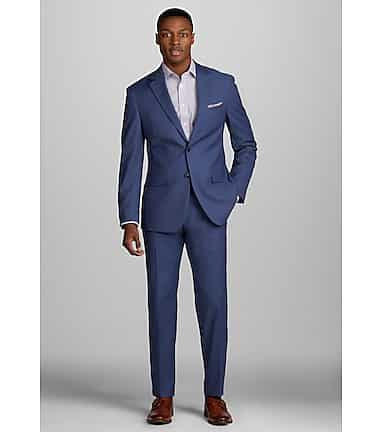Understanding the Tailoring Refine: From Fabric Selection to Last Fitting for the Suitable Closet
The customizing procedure is a complex interaction of art and science, beginning with the important decision of fabric selection and culminating in the specific changes of final installations. Each fabric type brings unique top qualities that influence not only the aesthetic appeal but also the garment's durability and suitability for numerous occasions.
Significance of Fabric Selection
Picking the ideal fabric is important in the customizing process, as it directly influences the convenience, resilience, and total aesthetic of the last garment. The choice of material establishes the structure for the garment's efficiency, capability, and style. Different materials have distinct homes, such as breathability, stretch, and weight, which can dramatically affect just how the garment drapes and fits the body.

A tailored item made from an appropriate textile not only showcases workmanship yet additionally boosts the wearer's confidence. Understanding the nuances of textile selection is paramount for any type of customizing venture. It guarantees that the last product not just meets the visual needs of the customer yet also aligns with practical needs, thus attaining a harmonious balance between type and function in the customized wardrobe.
Kinds Of Fabrics and Their Uses
Understanding the different kinds of materials offered is crucial for making informed choices throughout the customizing process. Each material has one-of-a-kind qualities that dictate its viability for specific garments and events.
Its versatility permits it to be tailored into whatever from t shirts to gowns. Its natural flexibility aids garments preserve form over time.
Silk exudes luxury and is lightweight, making it best for eveningwear and delicate shirts; nonetheless, it calls for careful handling as a result of its fragility. Bed linen, with its textured finish, is a preferred choice for warm environments, supplying a crisp and airy feel, yet it wrinkles conveniently, which may affect the garment's appearance.
Artificial fabrics, such as polyester and nylon, deal durability and resistance to creases, making them ideal for daily wear and energetic clothes. Understanding these material kinds and their homes enables much better decision-making, guaranteeing that each tailored item not only fits well but additionally lines up with the desired purpose and event.
The Tailoring Techniques Explained
The art of tailoring counts on a selection of techniques that transform material right into well-fitted garments. Central to this process is pattern drafting, where a tailor creates design templates based on the client's measurements and desired design. This initial step guarantees that the garment will certainly fit the wearer properly prior to any type of cutting takes place.
Once patterns are developed, reducing strategies enter play. Precision is critical as errors can bring about misfitting garments. Tailors typically use various cutting techniques, such as single-layer reducing for elaborate styles and multiple-layer reducing for effectiveness on basic patterns.
Basting is another vital strategy, permitting tailors to momentarily stitch textile assemble for an initial fitting (custom suits perth). This technique supplies the chance to assess the drape and overall shape prior to last stitching
Seaming methods, including flat-felled seams and French joints, boost the garment's longevity and visual allure. Tailors also use strategies such as interfacing and extra padding to offer structure and shape to specific locations, like collars and shoulders.
Lastly, completing techniques, including hemming and edge ending up, make sure the garment's longevity while giving a sleek look. With each other, these techniques develop the backbone of efficient tailoring, causing beautiful, tailor-made clothing.

Fitting Changes and Considerations
After the preliminary tailoring strategies have actually been applied and the garment is created, suitable adjustments end up being critical to accomplishing the best fit. These modifications attend to various facets of the garment, ensuring it contours to the wearer's physique and improves overall appearance.

The rise of trousers is another vital factor; it must rest pleasantly above the hips without creating discomfort, permitting for convenience of activity. Hemming lengths for both trousers and skirts ought to mirror the wearer's preferred design while appreciating proportions.
Furthermore, attention needs to be offered to the rear of the garment, making certain that there are no unpleasant pulls or excess fabric - tailor suits perth. Each adjustment should be diligently thought about, as even minor alterations can considerably affect the total fit and visual of the customized piece, eventually bring about a closet that exhibits self-confidence and class
Preserving Your Tailored Garments
Proper maintenance of customized garments is important to preserving their fit and appearance with time. To make sure long life, regular cleaning is extremely important. Always follow the care tag instructions, which might recommend dry cleaning for delicate textiles or equipment washing for even more sturdy materials. Avoid constant laundering, as this can use down the fabric and alter the garment's form.
Storage is equally crucial; use cushioned hangers for jackets and layers to keep shoulder structure, and shop pants folded neatly or hung to avoid creasing. Protect check that garments from check my source direct sunshine, which can discolor colors and damages fibers.
In addition, periodic examinations for small fixings can prevent larger issues. Check for loose switches, fraying seams, or indications of moth damages, resolving these troubles quickly to preserve the garment's stability.
Finally, consider seasonal rotation. Wearing tailored pieces in moderation enables textiles to recuperate, expanding their lifespan. By implementing these upkeep strategies, you can make certain that your customized garments remain as excellent as the day you initially wore them, boosting your ideal closet for years to find.
Final Thought
The customizing procedure, encompassing textile choice, experienced techniques, and specific suitable changes, plays a crucial role in developing garments that boost both comfort and design. Comprehending the value of maintenance expands the life of customized garments, solidifying their worth in a well-curated wardrobe.